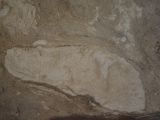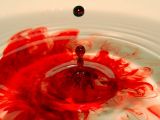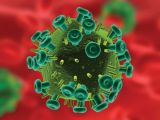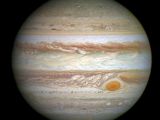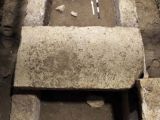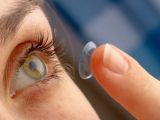Time to bake another cake, drench it in chocolate, grab a spoon and eat it whole to celebrate the passing of yet another week. True, it's annual events that are usually celebrated with cake, but I for one see no reason why folks insist on discriminating against Sundays.
The way I see things, Sundays mark the end of the workweek and they deserve to be honored as such. Mind you, while you're busy enjoying your end-of-the-week cake, be sure to also have a look at the 10 absolute best science news and announcements of the past few days.
10. Footprints found in Denmark are 5,000 years old
This week, archaeologists announced the discovery of several human footprints on Denmark's Lolland island. The footprints, said to have been left behind by two individuals, date back to about 5,000 years ago. Thus, researchers say that they were created by Stone Age fishermen.
The footprints in question were discovered on both sides of the remains of an ancient fishing fence, i.e. a wooden fence that our ancestors in the area placed in shallow waters to trap fish and capture them.
What's interesting is that, by the looks of it, these Stone Age marks are the first of their kind to have until now been discovered anywhere in Denmark. Apart from the footprints, archaeologists exploring the island of Lolland have until now unearthed bits and pieces of pottery and even animal skulls. 3
9. Dracula's thirst for blood explained by science
Apparently, just one chemical compound is behind Count Dracula's thirst for blood. The compound in question, known to the scientific community as trans-4,5-epoxy-(E)-2-decenal. It gives blood its distinct metallic scent and all predators seem to love and adore it.
Thus, when tigers, wild dogs and bush dogs were presented with sticks impregnated with this compound, they started clawing and biting at them. The animals displayed the same behavior when presented with stick impregnated with horse blood.
As explained by scientists, the fact that the compound alone caused the animals to display these behaviors indicates that, regardless of whatever other ingredients are present in blood, its the trans-4,5-epoxy-(E)-2-decenal that predators, Count Dracula included, can't resist.
8. Manicure instruments gave a young woman HIV
A scientific paper that hit the public eye this week documents the case of a woman who appears to have contracted HIV from a set of contaminated manicure instruments. The woman, now 22 years old, is currently struggling with advanced HIV infection.
It is understood that the person who passed the HIV virus to the 22-year-old was her cousin. Thus, the two women shared manicure instruments for quite a while before the cousin was found to have HIV and they each got their own set.
Specialists say that, as worrying as this piece of news might be, the fact of the matter is that this HIV infection via contaminated manicure instruments was an extremely rare event. Hence, there is no reason for people to worry about being in casual contact with HIV-infected individuals.
7. Jupiter found to have a sunburn the size of 2 Earths
A new paper authored by researchers with NASA argues that, contrary to previous assumptions, Jupiter's Great Red Spot is not the creation of reddish chemicals present in the planet's cloud cover, but a ginormous sunburn.
Thus, it is now argued that the spot formed when ultraviolet light hit ammonia and acetylene gases hovering over the planet and triggered a series of reactions that translated into the formation of a reddish material.
If the NASA scientists are right, this could mean that, below the surface, where ultraviolet light probably hasn't made it yet, Jupiter's Great Red Spot might not be all that red after all. On the contrary, some say the spot's underbelly is probably white or grayish.
6. Protein could hold the key to unlimited brain power
Having carried out a series of experiments on laboratory mice, researchers found that one protein that is naturally occurring in the brain keeps memories from forming by blocking molecules needed to process and store information.
It is believed that, if this protein is also present in the human brain, blocking its action could be the key to achieving unlimited brain power by boosting an individual's ability to make head and tail of environmental cues and create memories.
In the case of the rodents that the researchers experimented on, forcing this protein into retirement translated into a better connection between neurons. As a result, the mice had an easier time processing information and creating memories.
5. Human bones found in 4th century tomb in Greece
By now, you probably know that, earlier this year, archaeologists got busy exploring an ancient tomb in Greece. Recent news on the topic says that, just days ago, several human bones were discovered in a vault hidden under the floor of the tomb's third chamber.
The skeletal remains were found hidden inside a wooden coffin. Oddly enough, several metal nails and glass fragments were found among the human bones. It is still unclear how and why the metal nails and the bits and pieces of glass ended up in the coffin.
Despite the fact that archaeologists have explored the tomb's every nook and cranny, the identity of the person who was supposed to spend eternity inside it remains a mystery. Seeing how the tomb dates back to the era of Alexander the Great, it could be that it was built for one of his relatives or generals.
4. Contact lenses caused thousands of eye infections in 2010
A report issued by the Centers for Disease Control and Prevention earlier this week says that, in the year 2010 alone, nearly 1 million people living in the US had to pay their doctor a visit or, even worse, be taken to an emergency room after developing an eye infection.
What's really worrying is that, apparently, most of these people got an eye infection because they failed to use their contact lenses safely. Specifically, they most likely failed to wash their hands when handling them or didn't clean them with a disinfecting solution on a regular basis.
Specialists say that, as shown by previous investigations, contact lenses make a great home for bacteria, fungi, amoebas and even viruses. Not to freak you out but, earlier this year, one woman's eyeballs were eaten by an amoeba that set up camp on her contact lenses. Needless to say, she is now blind.
3. Traces of flame retardants documented in people in California
A detailed analysis of urine samples revealed that, without their knowledge, folks in California currently carry several toxic compounds in their body. The compounds, identified as phosphate flame retardants, have until now been linked to various health issues, cancer and trouble with the nervous and reproductive systems included.
As their name suggests, flame retardants are added to plastics, textiles and all sorts of other materials to keep flames from spreading should a fire occur. Thus, people can be exposed to it simply by sitting on a couch and putting on a T-shirt.
True, several flame retardants found to be toxic have been outlawed and phased out over the years. Still, it appears that many others are still present in people's homes and offices. This is an issue that should be dealt with as soon as possible, researchers say.
2. Regular, tasty peanut butter used to make diamond
The next time you set out to make yourself a peanut butter sandwich, take a couple of minutes to ask yourself: do you want that sandwich that badly, or could you perhaps settle for a handful of diamonds that you can sell and pay someone to make you peanut butter treats for the rest of your life?
Not to beat about the bush, it was earlier this week when scientists announced that it is very much possible to make diamonds from peanut butter. This is because this treat contains a heck lot of carbon and diamonds are basically piles of carbon arranged by Mother Nature in a super neat crystal structure.
The thing is that, to make diamonds from peanut butter, the treat must be subjected to environmental conditions similar to the ones in the Earth's lower mantle. Otherwise put, the peanut butter must be exposed to insanely high temperatures and pressures.
It appears that, during the transformation, explosions can occur. This is because the hydrogen that is bounded to carbon in peanut butter likes to go out with a boom. What's more, scientists say that it takes weeks to grow diamonds in this manner and that the resulting stones are embarrassingly small.
1. The Philae spacecraft landed on Comet 67P/C-G
Just days ago, the entire world was in a frenzy, and it wasn't because Kim Kardashian saw it fit to delight us with a couple of nude photos. It was because, on November 12, the European Space Agency's Philae spacecraft successfully landed on Comet 67P/Churyumov-Gerasimenko.
Having parted ways with the Rosetta spacecraft, which carried it on its back all the way to its target comet, the lander took about 7 hours to reach the surface of this celestial body. Shortly after landing, Philae got busy snapping photos of its new home, and even drilled into the comet.
Specialists with the European Space Agency say that, were it to succeed to put its secondary rechargeable battery to work, the lander could remain operational on the surface of the comet until March, 2015.
The thing is that, since this battery recharges by harvesting sunlight, the Philae lander is in desperate need to find a place where it could get the perfect tan. Seeing how the spacecraft is currently pinned against the bottom of a cliff, getting enough sunlight to stay up and running is proving quite a hassle.
Just for the record, it must be said that the Rosetta spacecraft, the Philae lander and Comet 67P/Churyumov-Gerasimenko are currently located at a distance of about 511 million kilometers (317 million miles) from our planet.
They are traveling through space at a speed of about 18 kilometers per second (11 miles per second) and are heading towards the Sun. Should things go according to plan, the Rosetta spacecraft will remain operational for several more months and keep the comet company until it makes its closest approach to the Sun.
So, there you have them. The 10 absolute best science news and announcements of the week. To keep up to date with what brainiacs are up to these days, be sure to check this page again next Sunday. Another round-up will be waiting for you, as per usual.
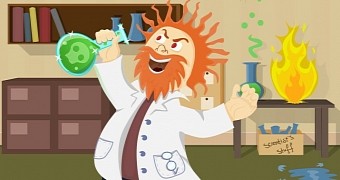
 14 DAY TRIAL //
14 DAY TRIAL // 
